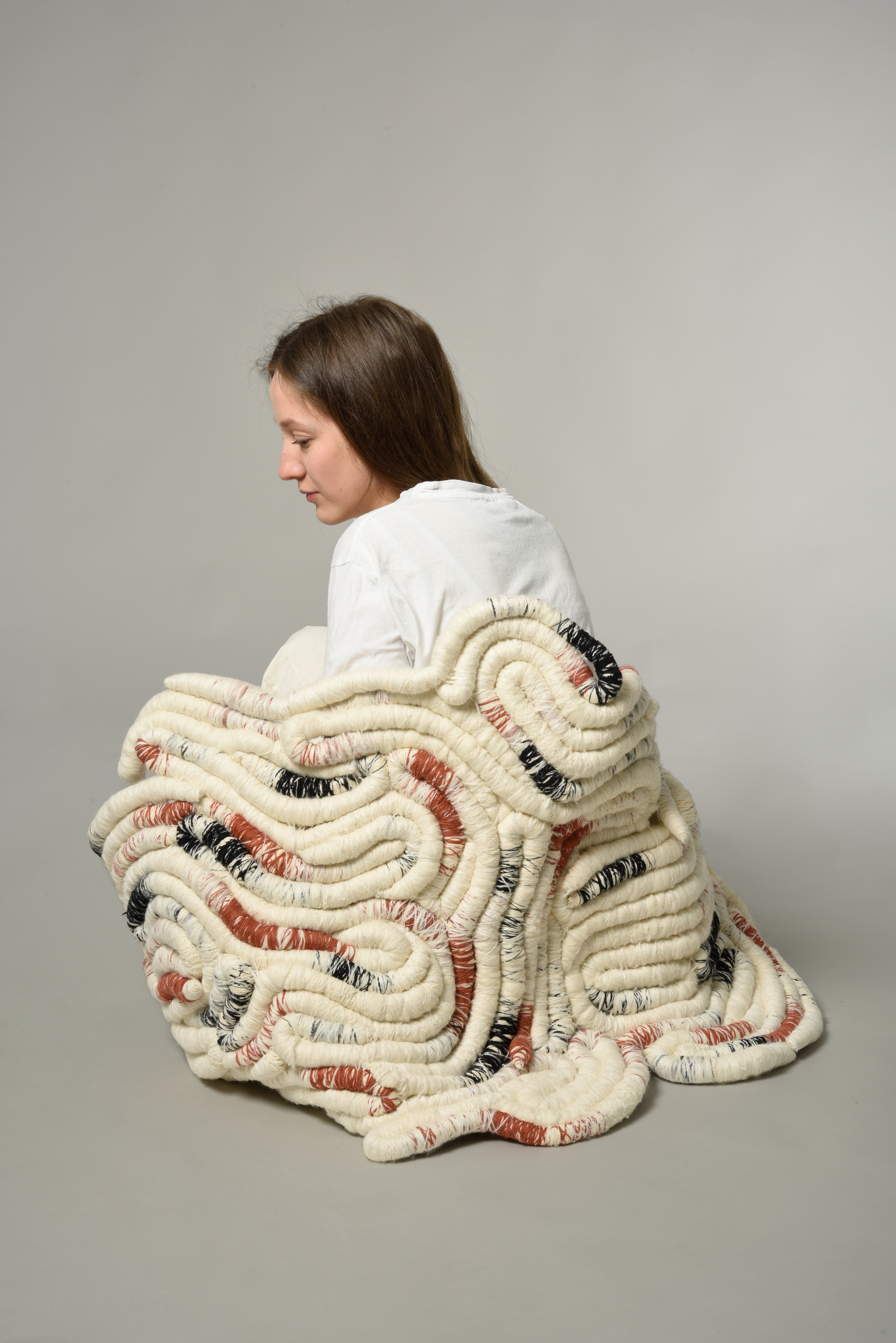Carpet Unfurled
In Western domestic settings, the carpet is often perceived as a mere decorative item. Despite being a part of our daily interactions, the profound role it plays in shaping our living spaces is frequently overlooked. Moreover, it is typically experienced unconsciously and passively. Conversely, in Middle Eastern cultures, rugs carry a multitude of symbolic meanings. They serve to demarcate and distinguish an area from its surroundings. They are a place of refuge as well as a place of worship, fostering community, communication, and comfort, with various domestic and leisure activities taking place sitting directly on their surfaces.
Inspired by a carpet’s ability to establish spaces, a transformable textile is created, enabling its inhabitant to (re)connect to this common object, its haptic and tactile qualities, as well as its significance in contributing to the intimacy and comfort we experience in our safe spaces. The final piece can be freely reshaped into a three-dimensional object, according to one’s needs, transforming it from a flat surface into a kind of seating object or carpet landscape. The carpet is crafted from individual, sculptural “yarns” that are woven and sewn together. The yarns consist of a metal wire core, around which fabric scraps, raw wool fibers, and various yarns are wrapped.
Drawing visual and textural inspiration from Amazigh Beni Ourain rugs, known for their natural wool composition and minimalist geometric elements in black, brown, or red, the design of the yarns and the overall shape of the carpet emerge from an intuitive process. Repetitive manual movements during production create a meditative working state, allowing the materials to guide and influence the outcome.





Photography: Saskia Buch & Linda Kettler
Semesterproject WS 23/24
weißensee kunsthochschule berlin
MA Textile and Material Design
Staying in Touch - Prof. Nadine Göpfert